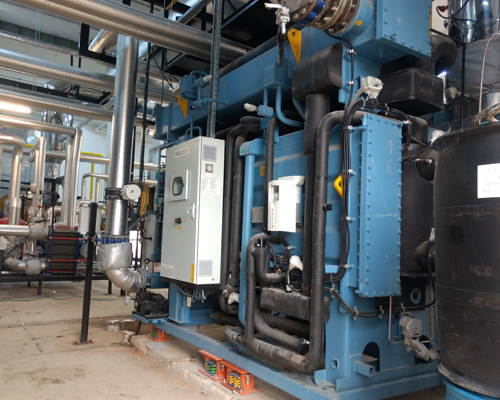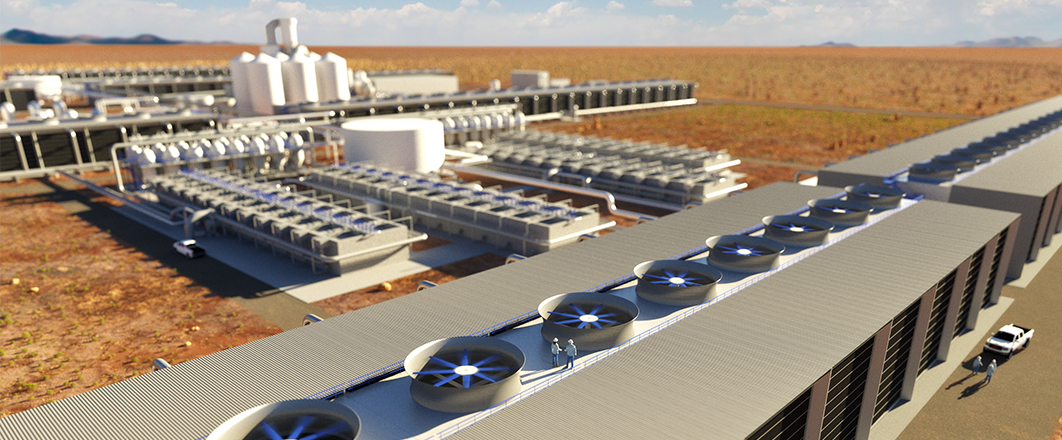Carbon Capture’s Influence on Climate Technology
With a market size of $6B, Carbon Capture Storage (CSS) is one of the most important ClimateTech verticals against the investment landscape. Driven by substantial governmental support through incentives and regulatory frameworks and stringent global carbon reduction targets, it is poised for exponential growth. The sector will require $6T to achieve net-zero targets by 2050, positioning CCS as a massive opportunity for VCs looking to invest in sustainable technologies with long-term benefits. Several technologies serve the wider CCS umbrella including those listed below.
CCS Technologies:
- Pre-combustion Capture removes CO2 before combustion occurs, The CO2 is then separated, typically using solvents or membranes, before the hydrogen is burned as a clean fuel.
- Post-combustion Capture captures CO2 from flue gasses after combustion. This process usually employs solvents like amine to absorb the CO2 from the exhaust of fossil fuel burning.
- Oxy-fuel Combustion burns fossil fuels in oxygen instead of air, resulting in flue gasses that are primarily water vapor and CO2. The water vapor is condensed, leaving nearly pure CO2 that can be more easily captured.
- Direct Air Capture (DAC) removes CO2 directly from the atmosphere. These systems use chemical processes to absorb CO2 even at very low concentrations
CCS technologies are being integrated into various sectors, including power generation, industrial processes, and direct removal of CO2 from the atmosphere (Greenlyte Carbon, CREW Carbon, Airhive,Everest Carbon).The implementation of CCS technologies is supported by investments and regulatory frameworks that promote carbon neutrality goals globally.
Why is CCS so important?
CCS is particularly crucial for industries that are difficult to decarbonize, such as cement, iron and steel, and power. Different regions see varying degrees of adoption based on cost competitiveness and regional policies. A notable example is Microsoft, which has committed to becoming carbon negative by 2030. Part of their strategy involves using CCS technologies to offset their carbon emissions. They have entered into agreements to purchase carbon removal services from companies like Climeworks, which specializes in direct air capture of CO2 and its permanent storage.
For VCs, the CCS industry offers a diversified portfolio across applications—industrial decarbonization to renewable energy projects. However, assessing the technological viability and scalability of emerging CCS technologies will be crucial to minimizing risks and maximizing ROI. One company providing solutions for industries that are difficult to decarbonize is Oxy, who are developing a significant project in Texas aiming to operate the first million-tonne-per-year carbon capture plant.
Another such company is Schlumberger (SLB). Efforts from SLB include collaborations to accelerate the industrialization and scale-up of proprietary technologies like non-aqueous solvent (NAS) technology for capturing CO2 from diverse industrial emissions
CCS delivers a promising ROI and impactful changes on global environment regulations.
Global investment in CCS technologies needs to increase from current levels of around $2-3B per year to $40B annually by 2030 to meet climate targets. This represents a significant growth opportunity for investors.

CCS Plant in Switzerland
Due to the volume of capital needed in the coming years across all ClimateTech industries, Ryan Panchadsaram, technical advisor to John Doerr at Kleiner Perkins, is optimistic about the potential in the “world of investing in new technologies that could truly beat the old—on cost, on performance, and a lot of things“. Case in point, the Petra Nova project in Texas captures around 1.6 million tons of CO2 annually and costs approximately $1 B. It benefits from tax credits and enhanced oil recovery (EOR) revenues, demonstrating a viable business model. From an environmental perspective, the IPCC highlights CCS as essential for limiting global warming to 1.5°C.
CCS processes are energy-intensive, which can reduce the overall efficiency of power plants and industrial facilities. The energy required to capture and compress CO2 can consume a significant portion of the energy produced by a power plant. This “energy penalty” can range from 10-40% of the plant’s output, making CCS less attractive from an efficiency standpoint. This energy intensity also means that more fuel must be burned to produce the same amount of usable energy, potentially offsetting some of the benefits of capturing CO2.
How is CCS Changing?
The concept of CCS dates back to the 1970s, but significant development began in the late 1990s and early 2000s. Early CCS projects were primarily focused on capturing CO2 from natural gas processing and using it for enhanced oil recovery (EOR). These initial projects laid the groundwork for understanding the technical and economic feasibility of capturing and storing CO2. But how are they changing?
Below are different types of CCS tech that made significant strides over the years, evolving to become more efficient, cost-effective, and easier to commercialize:

CCS propeller machine capable of performing the physical absorption process
One of the most mature technologies, chemical absorption uses solvents like amines to capture CO2 from flue gasses. Recent advancements in solvent chemistry have led to more efficient and less energy-intensive solvents. For instance, the development of advanced amine solutions that require less energy for regeneration has significantly reduced the energy penalty associated with CO2 capture
New materials, such as metal-organic frameworks (MOFs) and zeolites, have improved the efficiency of physical absorption and adsorption processes. These materials have high surface areas and can selectively capture CO2 at lower pressures and temperatures, making the process more energy-efficient.
Innovations in membrane technology have led to the development of highly selective and permeable membranes that can separate CO2 from other gasses. These membranes are less energy-intensive than traditional chemical absorption methods and are increasingly being used in industrial applications.
In addition to these technological advancements, storage solutions have also made significant progress throughout the years. Enhanced understanding of geological formations has improved the safety and reliability of CO2 storage. Advances in seismic monitoring and reservoir simulation technologies have enhanced the ability to predict and monitor CO2 behavior in storage sites, ensuring long-term stability and preventing leakage. Researchers are exploring the potential of mineralization, where CO2 reacts with naturally occurring minerals to form stable carbonates. This method offers permanent storage and is being tested in various pilot projects. One notable example is the CarbFix project in Iceland, where CO2 is injected into basalt formations and rapidly mineralized. From a venture perspective, enhanced technologies open avenues for lucrative investment opportunities.
The economic viability of CCS has improved due to supportive policies and incentives. Governments worldwide are implementing carbon pricing mechanisms, tax credits, and grants to encourage CCS development. For instance, the U.S. 45Q tax credit offers significant financial incentives for capturing and storing CO2, making CCS projects more attractive to investors.

Oxy Power Plant Grid and Setup
CCS in VC
The primary driver for investing in CCS technology is its potential to reduce greenhouse gas emissions. The International Energy Agency (IEA) states that to meet the goals of the Paris Agreement, “CCS could contribute to 15% of the cumulative reductions in CO2 emissions needed by 2070” . The importance of CCS is underscored by the fact that certain industries, such as cement, steel, and chemicals, have limited alternatives for reducing emissions.
Government policies and international agreements increasingly focus on carbon reduction. The agreement emphasizes the need to limit global warming to well below 2°C, with efforts to keep it to 1.5°C. As a result, many governments have implemented policies supporting CCS technologies. For instance, the U.S. introduced the 45Q tax credit, which offers $50 per ton for CO2 permanently stored and $35 per ton for CO2 utilized in enhanced oil recovery or other beneficial uses . This regulatory environment creates a favorable landscape for VC investments in CCS, providing significant financial incentives. In addition to this, The CCS market is witnessing rapid technological advancements, driving down costs and improving efficiency. According to a report by the Global CCS Institute, “the cost of capturing CO2 from industrial sources has fallen by approximately 50% over the past decade”.
Innovations in capture techniques, such as chemical looping, and advancements in storage solutions, including deep saline aquifers and basalt formations, make CCS more viable and cost-effective. These technological strides present lucrative opportunities for early-stage investments with the potential for high returns as the technology matures. One example is CarbonCure, a startup injecting captured CO2 into concrete during the mixing process, where it becomes permanently sequestered while improving the material’s strength. CarbonCure secured more than $80 million in new equity financing.This investment round also saw participation from prominent investors such as Breakthrough Energy Ventures, Amazon’s Climate Pledge Fund, Microsoft’s Climate Innovation Fund, Taronga Ventures, 2150, and BH3 Growth Equity, among others ( CCS projects often require substantial capital investment and collaboration between multiple stakeholders, including governments, corporations, and research institutions. For VC investors, this environment offers opportunities to form strategic partnerships and collaborations that can enhance the value and reach of their investments. Companies that successfully navigate these partnerships can gain a competitive edge and drive the adoption of CCS technologies.
While CCS offers significant potential for mitigating climate change, it faces numerous challenges that must be addressed to realize its full potential. High costs, energy intensity, limited storage capacity, regulatory and policy uncertainty, public perception, and technical and geological challenges are all barriers to the widespread adoption of CCS. Addressing these challenges will require concerted efforts from governments, industries, and investors to develop cost-effective technologies, create supportive policies, build necessary infrastructure, and engage with the public to gain acceptance and support for CCS projects. By overcoming these hurdles, CCS can play a crucial role in reducing global CO2 emissions and achieving climate goals.
______________________________
If you are a builder, investor or researcher in the space, I would love to have a chat – please reach out to me at amit.k@thelotuscapital.com
